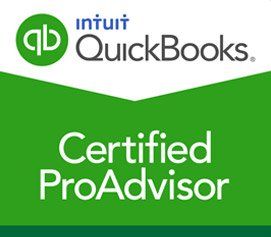Education Credits are for Children? Think Again!
You are mistaken if you believe that education credit only applies to the cost of sending your children to college. You, your spouse, and any dependents you support are eligible for education credits. You or your spouse can still be eligible for a tax credit, even if only one of you is enrolled in school part-time.

The American Opportunity Tax Credit (AOTC) and the Lifetime Learning Credit (LLC)
The American Opportunity Tax Credit (AOTC) and the Lifetime Learning Credit (LLC) are both options for tax deductions that may be claimed for educational expenses. To qualify for either credit, the student must be enrolled in an accredited educational establishment for a minimum of one academic period (a semester, trimester, or quarter) during the calendar year.
An eligible educational institution is any recognized public, nonprofit, or proprietary postsecondary school in the United States that can participate in the student aid programs administered by the United States Department of Education.
The credits are reduced or eliminated for taxpayers with higher incomes who are married and filing jointly or single and filing jointly. Individuals who are married but file their taxes separately are not eligible for any credits.
How are AOTCs and LLCs Qualified?
The following table provides the qualifications and details for both credits:
| QUALIFICATIONS | AOTC | LLC |
|---|---|---|
| Allowance Period | First 4 years of postsecondary education | Any postsecondary education for any number of years |
| Enrollment | Must be considered at least a half-time student by the educational institution | Not required to be enrolled at least half-time |
| Program Type | Must be pursuing a program leading to a degree or another recognized educational credential | Not required to be enrolled for the purpose of obtaining a degree or other credential |
| Credit Applied | Per student | Per family |
| Credit Amount | 100% of the first $2,000 and 25% of the next $2,000 in qualified expenses | 20% of up to $10,000 in qualified expenses |
| Credit Refund | Up to 40% | No, can only reduce tax |
| Qualified Expenses | Qualified tuition and related expenses, which include books, supplies and equipment required for enrollment or attendance | Qualified tuition and related expenses; the books, supplies and equipment must be purchased from the educational institution |
| High-Income AGI Phase-out Ranges | Married Filing Jointly: $160,000 to $180,000 Married Filing Separately: No credit allowed Unmarried: $80,000 to $90,000 | Same |
| Claim Both Credits on Same Return? | Yes, but not for the same student | Same |
There are a great number of people who can maintain their eligibility for the LLC even though they work full-time and attend school part-time. To learn which is right for you, connect with a Yoke Tax professional for a free one hour consultation.
The Fine Print of Education Credits
A further intriguing aspect of education credits is that the credit is awarded to the taxpayer who is eligible for and claims the student's exemption for the year, even if that taxpayer is not the one who pays the expenditures for the student.
Therefore, even if a child's noncustodial parent pays for the child's college expenditures, the credit is still awarded to the custodial parent, provided that the custodial parent is otherwise qualified. The same rule applies when grandparents assist pay for their grandchildren's education. For the grandparents to be eligible for the credit, they must be the ones who claim the student as a dependent rather than the child's parents.
How AOTCs and LLCs Are Applied
Form 1098-T is the tax form often sent to the taxpayer by the educational institution (or dependent). This covers all the information required to fill out the IRS form and make a claim for the credit.
There are instances in which the 1098-T must be retrieved electronically from the educational institution. If a taxpayer wants to claim any of these credits, they must have this 1098-T form by law. However, a credit can be claimed for other eligible costs.
In many situations, the AOTC and LLC have their unique set of qualifying expenditures. Refer to the following table to see which expenditures are eligible for the credits.
| EXPENSE | NOTES | AOTC | LLC |
|---|---|---|---|
| Fees, books, supplies, and equipment for apprenticeship programmes | Section 1 of the National Apprenticeship Act requires participation in a qualified apprenticeship programme. | No | No |
| Computer | If needed for attendance at the educational institution | Varies | No |
| Computer Software | If needed for attendance at the educational institution. Software for sports, games, hobbies only if educational in nature | Varies | No |
| Course Materials and Supplies | For the LLC, only if purchased from the institution as a condition of attendance | Yes | Varies |
| Equipment | If required for enrollment or attendance | Yes | No |
| Fees | If required for enrollment or attendance | Yes | Yes |
| Fees, Bundled | Must be allocated between qualified and personal fees | Yes | Yes |
| Fees, Non-Academic | Only if they are required to be paid to attend | Yes | Yes |
| Fees, Student Activity | If paid to the educational institution | Yes | Yes |
| Insurance | - | No | No |
| Medical | - | No | No |
| Room & Board | - | No | No |
| Travel Expenses | - | No | No |
| Tuition: Higher Education | - | Yes | Yes |
| Tuition: Hobbies, Sports, Games, Non-Credit Courses | If part of a student's degree program for AOTC and LLC. For LLC if required for employment or to improve job skills. |
You’ll notice that some of these sections are labeled as “varies.” This is because they apply under very specific situations. We describe them in the “Notes” column.
In the end, though, it is best to connect with a tax professional before moving forward with the LLC or AOTC. A competent CPA can be the difference between saving hundreds and saving thousands. Set up a
free one hour consultation today.



